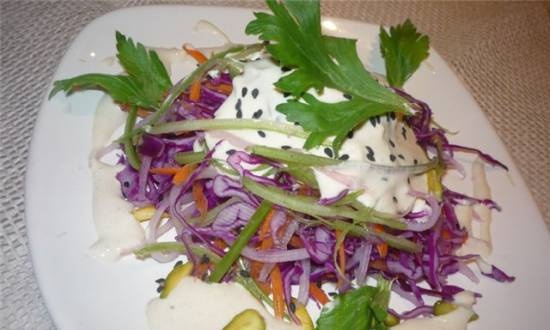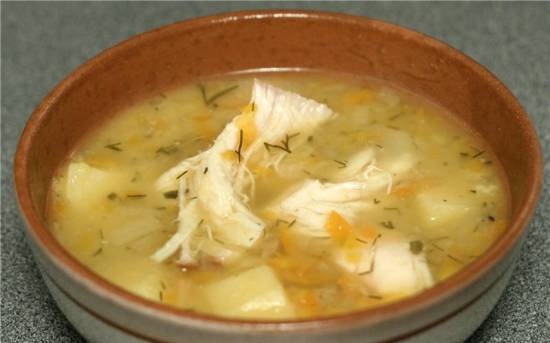Gypsy
You write that the plant is protected and cannot be torn, which means it is being replaced with another grass.
No, it is grown in garden beds, like other medicinal and culinary herbs.
Look for
Marjorana syriaca and you will be happy
I copy here an article from the Tnuva forum:
ZATAR, ZATER, ZAHTAR, ZA'ATAR ... What it is A mixture of spices and seasonings very widely known throughout the Middle East and Egypt, as well as a group of plants of the same name of several genera. It is believed to come from the Syrian city of Aleppo, a center for the trade in spices and local herbs.
Almost every Middle Eastern country has its own proportions of this mixture, and in different countries they mean different herbs under the same name - zaatar. Some mixes are hot because of red pepper, some lemons are added for flavor, there are mixes with herbs, salty - there are countless options. Only three components are unchanged - sesame, sumac and zaatar.
Za'atar (Origanum syriacum) Wild Middle-EaStеrn Oregano Ezov As the name implies, this type of oregano grew in the territory of modern Syria, Palestine and Israel and has a rich history. Both the Catholic and Jewish Encyclopedias note that this particular plant is mentioned in the Bible under the names "ezov", "ezob", in Arabic "saatar", originally denoting several plant species from the genus Satureja, which are also native to Palestine. Following the biblical Old Testament, we can conclude that ezov in ancient Israel and Palestine was used in two ways - for ritual purposes - a bundle of ezov was sprinkled with sacrificial blood of lambs on the door sills on the day of Passover, in addition, bundles were also used for ritual purifications and ablutions down to the lepers. An unassuming and modest shrub that grew on rocks and stony slopes was generally accessible to the entire population of Israel and Palestine. Later, in European Christianity, this tradition was transferred to European hyssop, and sprinkling with holy water began to be carried out by him.
Syrian oregano has an average taste and smell between thyme, oregano and marjoram. The same plant is used in Morocco and Egypt for a similar mixture called "dukka".
Modern research has confirmed its disinfecting, bactericidal and antioxidant properties. The main components of Syrian oregano essential oil are gamma-terpinene, carvacrol (69,, 5%), p-cymine (10.3%), beta-caryophilus and more than a dozen components.
Synonyms
Botanical Majorana syriaca L. Rafin. = Origanum Maru L.
English Bible hyssop
Hebrew Ezov
Arab Zaatar
Turkey kekik Za'atar Farsi (Thymus capitatus) Conehead Thyme The assignment of this species to thyme is extremely conditional, there are quite a few botanical synonyms - Coridothymus capitatus Rchb, Satureja capitata, Thymbra capitata and a number of others.
T. about. this plant was attributed to both savors and the legendary herb Fimbra. It is believed that one of the epithets of Apollo - Fimbreysky, that is, revered in the Fimbreysky field near Troy, where he had a temple and a sacred grove, is due to the grass that grew there
Kikeon (talker) - an ancient Greek drink made from a mixture of wine, honey, flour and fimbra (modern thyme), is already mentioned in Homer. This plant, Thymbra capitata, gave the drink a pungent, spicy aroma and taste. It was the favorite drink of the Attic peasants.
Today this plant is quite common in Spain, where it got along with the Moors. Despite the fact that it looks like thyme, its aroma is very similar to mountain savory. The name Thymbra is the old name of the savory, which is now a separate genus Satureja.The second epithet capitata is from the Latin head, the plant is named so, due to the fact that the inflorescences are grouped at the ends of the stems.
The main components of thyme capitate essential oil: carvacrol (35.6%), r-cymene 21.0%), thymol (18.6%), gamma-terpinene (12.3%), alpha-terpinene (3.2%), beta-myrcene (3.0%) and alpha thujone (1.3%).
Synonyms
Botanical Coridothymus capitatus, Thymbra capitata, Satureia capitata
English Conehead thyme, Cretan thyme, Spanish oregano, Headed savory
Israeli oreganum, Persian Hyssop
Turkey Ispanyol kekigi
Spanish Tomillo Cabezudo, tomillo andaluz, tomillo carrasqueño, tomillo tinajero
Arab Za'atar Farsi, Saghtar 
Another related plant is Thymbra spicata. Spicata is Latin for thorn, thorn. It also comes from Southeast Europe, Western Asia, and is widespread in the Middle East. Low-growing evergreen shrub.
The aroma of the essential oil is similar in composition to the Syrian oregano Origanum syriacum, thyme capitate Thymus capitatus and savory Satureia thymbra.
Synonyms:
Botanical Thymbra ciliata
English Donkey Hyssop, Black thyme
Arab Zaatar Sahrawi, Desert Hyssop
Hebrew Ezov midbari
Za'atar romi (Satureja thymbra L.) Whorled savory Ezov romi
In some countries in the Middle East, this type of savory, Satureja thymbra, is used in Zaatar seasoning.
If savory and mountain savory are associated with Central and Northern European cuisines, then this species of savory with pink flowers and thyme-like leaves came to Europe through Spain with the Moors, who in turn brought it through North Africa from Western Asia, where it also used in the Zaatar blend, as have a number of other similar spices
The main components of Satureja thymbra essential oil are carvacrol (40.15%), gamma-terpinene (26.56%), p-cymin (16.39%), thymol (13.16%), alpha-pinene (8%) ...
Synonyms:
Botanical Satureja biroi Jav.
English Thyme-leaved savory, Crete savory.
Hebrew Ezov romi
Turkey kara kekigi, Sater otu
Arab Za'atar romi Za'atar Farsi (Zataria multiflora Bioss) A thyme-like plant, an endemic plant growing in Iran. In recent years, his research has been carried out at the Tehran Medical University. In Iran, this plant is used in traditional folk medicine as an antiseptic, analgesic and gastric remedy, it is also used for food purposes, as a seasoning. Based on research, a medicinal cough syrup and an antibacterial and antifungal mouthwash have been developed.
Research by the Pakistani Chemical Research Institute, Karachi, Pakistan has discovered a new component of the essential oil of this plant, Zatatriol.
Other well-known components according to Iranian scientists are thymol (48.4%), carvacrol (12.6%), p-cymine, thymol methyl ether, cis-sitosterol, stigmasterol, oleanolic acid, betulinic acid, hexadecanoidic acid.
Note
In Turkey, all these and other local spices from the Oregano, Thyme, Savory and Fimbra genera are sold under the collective name Kekik, since almost all the spices of these genera are collected by the peasants of the vrechnaya, they hardly know which plant exactly fell into the bag. There may even be cases when the market sells you the residues after the distillation of the essential oil, mixed with a small amount of freshly dried herb. Therefore, it is better to buy seasonings in their entirety, or at least coarsely ground, so that parts of the plant can be distinguished.
What and how they eat
So, we got acquainted with those herbs that make up an integral part of the Za'atar blend. What else can you say about them - all herbs perfectly retain their smell when dried. If authentic plants are not available to us, nothing will prevent us from combining Za'atar from the herbs available at hand - for this we take 4 parts oregano, 2 parts thyme, 2 parts savory, 1 part marjoram and mix everything together. The base for the mixture is ready.
In addition, in some countries of the Middle East - in Yemen, Jordan, Saudi Arabia, Za'atar is called ordinary thyme, in this case, the matter becomes easier. This is with regard to herbs as condiments. It makes an excellent herbal tea - boil 1 tablespoon of Za'atar with boiling water, sweeten with honey, if necessary, and drink. You can make herb-flavored oil. If the herb is fresh, it will have medicinal properties.
It remains to add approximately equal parts of sesame and sumac - we get a mixture of Za'atar, you can add salt to it, then the dish does not need to be salted. This is the basis of Middle Eastern condiments.It is not at all difficult to depict it yourself and apply, for example, to marinate chicken wings or legs, which are suitable for a salad of tomatoes, cucumbers, mint, green onions and parsley, seasoned with lemon-olive dressing and sprinkled with sumac. A good addition will turn out for feta cheese or young cheese marinated in olive oil. If you add bread crumbs there, you get an excellent breading for kefte or fish.
One of the Israeli variants of such a mixture is Za'atar, sesame seeds, barberry, citric acid, salt. The Za'atar Green Blend does not include sumac, but parsley or Greek fenugreek is added.
The blend from the Syrian city of Aleppo differs, for example, from the herbal aroma of the Israeli blend, enriched with roasted cumin and coriander seeds and a drop of anise. Syrian Za'atar is a great seasoning for grilled lamb.
In Jordan, the Za'atar blend combines the nutty flavor of sesame with the sourness of sumach and thyme, and is a popular condiment for grilled meat and poultry.
The mixture is sprinkled with meat and vegetables, poultry and fish before baking, kebabs, salads. Most often, olive oil is added to the mixture, sometimes hummus is added and spread on bread.













